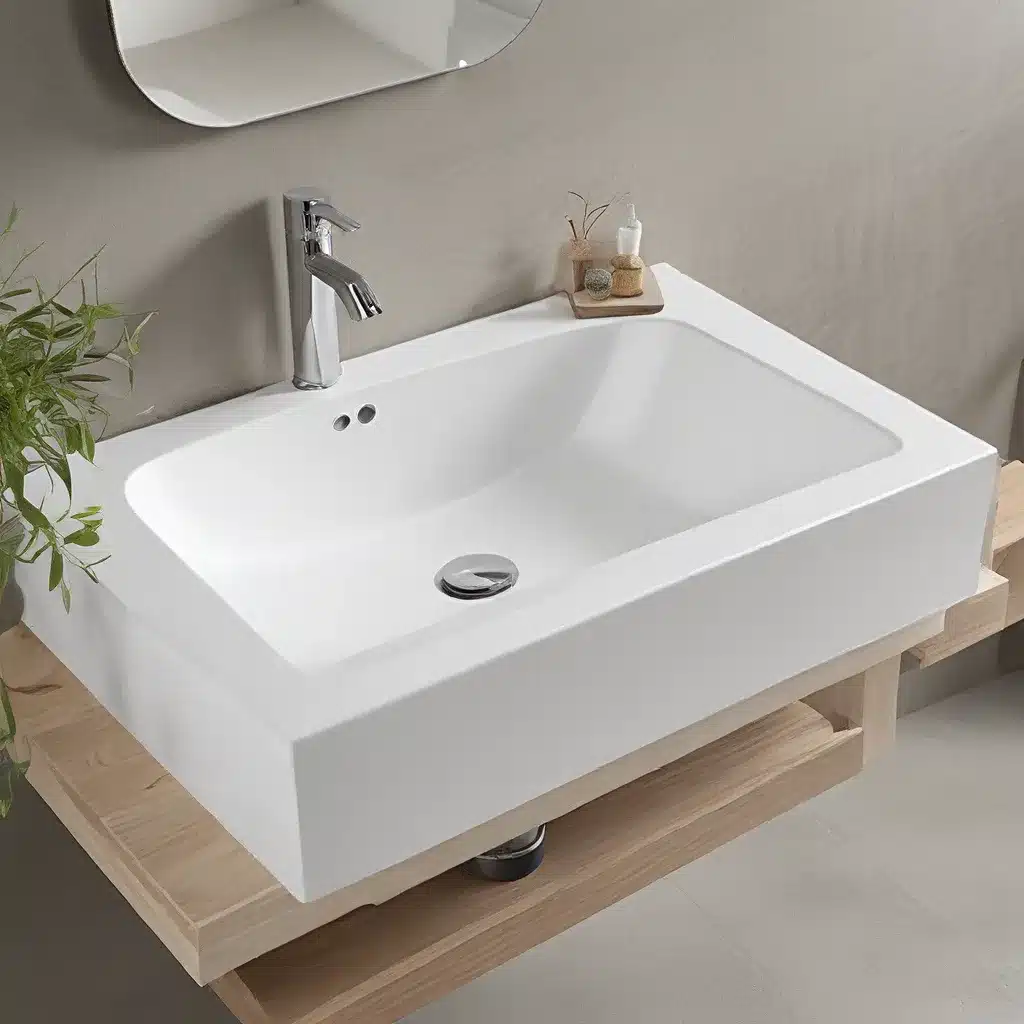
In the ever-evolving world of home design, the washbasin has emerged as a vital element that not only enhances the aesthetics of a space but also contributes to its overall sustainability. As homeowners and design professionals alike seek to create living environments that balance style and eco-friendliness, the selection of washbasins, sinks, and bathroom fixtures has become a crucial consideration.
Embracing Sustainable Design Trends
The growing emphasis on sustainability has led to the rise of innovative plumbing solutions that cater to the modern homeowner’s desire for both style and environmental responsibility. Wall-mounted faucets, industrial-style sinks, and smart toilets are just a few of the sustainable options that are gaining popularity in the market.
Wall-mounted faucets, for instance, not only contribute to a clean, uncluttered look by freeing up valuable counter space but also often feature adjustable flow settings to aid in water conservation efforts. By reducing water wastage, these faucets support sustainable plumbing practices and help homeowners minimize their environmental impact.
Innovative plumbing solutions like industrial-style sinks are also becoming increasingly sought-after. Characterized by their durable materials and practical design, these sinks often feature stainless steel or concrete finishes that are not only visually appealing but also long-lasting and recyclable, aligning with sustainable principles.
Furthermore, the integration of smart technology into bathroom fixtures has revolutionized the concept of modern, eco-friendly living. Smart toilets, for instance, offer a range of advanced features, such as touch-free flushing, built-in bidet functions, and customizable settings, while also incorporating energy-efficient modes to minimize power consumption.
Prioritizing Water-Saving Technologies
Alongside the aesthetic appeal of contemporary plumbing solutions, the integration of water-saving technologies has become a pivotal aspect of sustainable home design. High-efficiency faucets and showerheads equipped with aerators maintain strong water pressure while significantly reducing water flow, contributing to significant water savings.
Dual-flush toilets offer users the option to choose different water volumes, allowing for water conservation with every flush. Additionally, greywater recycling systems can be installed to reuse water from sinks and showers for irrigation, further reducing the strain on precious water resources.
By embracing these eco-friendly plumbing features, homeowners can not only enhance the functionality and efficiency of their homes but also align with contemporary values and trends, demonstrating a commitment to environmental responsibility.
Designing for the Future
When it comes to creating a future-ready living space, the integration of modern plumbing solutions plays a crucial role. Thoughtful design considerations and collaboration with industry experts can ensure that a home’s plumbing system not only meets current needs but also adapts to evolving technologies and lifestyle changes.
Adaptability is key, as homeowners should choose fixtures and systems that can seamlessly integrate with future advancements. Smart technology, such as app-controlled systems, can provide homeowners with enhanced convenience and efficiency, while also contributing to the overall cohesive design of the living space.
Careful placement and integration of plumbing elements can also maximize space utilization and usability, ensuring that the living environment remains both practical and stylish. By working closely with plumbing and design professionals, homeowners can ensure that their choices align with their aesthetic preferences and sustainability goals, ultimately creating a future-ready and eco-conscious living space.
Selecting the Right Materials and Finishes
When it comes to washbasin and sink design, the choice of materials and finishes can have a significant impact on the overall sustainability and long-term performance of the fixture.
Stainless steel and concrete, for instance, are popular choices for their durability, easy maintenance, and recyclability, making them ideal for industrial-style or minimalist design schemes. Porcelain and ceramic sinks, on the other hand, offer a range of color options and classic aesthetics that can complement a variety of design styles, from traditional to contemporary.
For homeowners seeking a more natural and organic look, stone and wood washbasins can provide a warm and tactile addition to the bathroom. These materials not only contribute to a sustainable design approach but also offer unique and individual character to each installation.
When selecting washbasin materials, it’s important to consider not only the visual appeal but also the maintenance requirements and durability to ensure a long-lasting and eco-friendly solution.
Maintaining Sustainable Washbasins
Proper maintenance and care are essential for preserving the sustainability and functionality of washbasins and sinks. Regular cleaning and upkeep can extend the lifespan of these fixtures, reducing the need for frequent replacements and contributing to a more sustainable household.
Eco-friendly cleaning products, such as plant-based detergents or natural stone cleaners, can help maintain the integrity of the materials while minimizing the environmental impact. Proper drainage and water flow management can also aid in conserving water and preventing costly leaks or water damage over time.
By investing in high-quality, durable washbasins and adopting sustainable maintenance practices, homeowners can reduce their carbon footprint and enjoy the long-term benefits of their plumbing fixtures.
Conclusion
As the demand for eco-friendly and stylish home design continues to grow, the selection of washbasins, sinks, and bathroom fixtures has become a crucial consideration for modern homeowners. By embracing sustainable plumbing solutions, homeowners can not only enhance the aesthetics of their living spaces but also contribute to a more sustainable future.
From water-saving technologies and durable materials to smart features and adaptable designs, the world of washbasin and sink options offers a wealth of innovative and environmentally-conscious choices. By collaborating with industry experts and making informed decisions, homeowners can create future-ready living spaces that seamlessly blend style and sustainability.
Ultimately, the journey towards a more eco-friendly home begins with the thoughtful selection and proper maintenance of your plumbing fixtures. By prioritizing sustainability and embracing modern design trends, you can transform your bathroom or kitchen into a stylish and environmentally-responsible oasis that reflects your commitment to a greener future.
Remember, your choice of washbasin can have a lasting impact on the functionality, aesthetics, and sustainability of your living space. Explore the possibilities and discover the transformative power of sustainable sinks for your modern home.